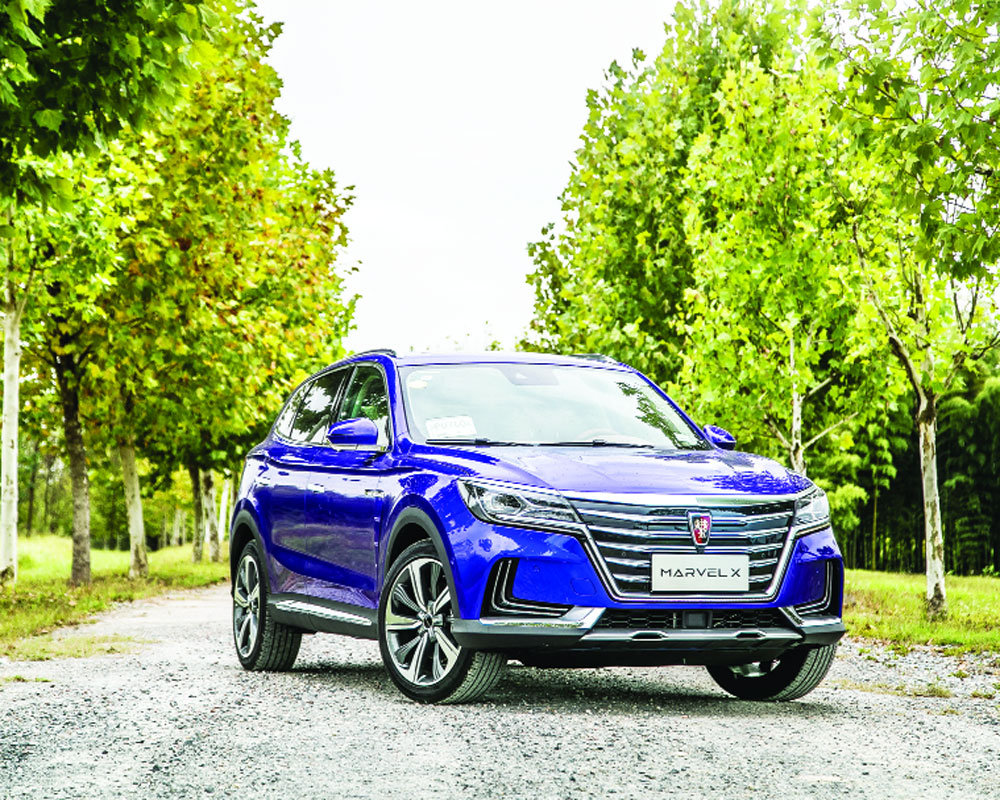MG Motor India is launching their first vehicle in India next year, and before that they took a group of journalists including this columnist to see their products and facilities in China. Let it be known that the manufacturers from the country have come a long way in making cars in little over a decade
I spent this past week in China as a guest of MG Motor India, the company which is a subsidiary of Shanghai Automotive Industrial Corporation (SAIC) China’s largest carmaker. A bit about SAIC Motor before I get to the cars we got to see and drive a bit in China. SAIC was one of the few Chinese carmakers with a history as it has been making cars and commercial vehicles in Mao’s China, before in 1984, it set-up a joint-venture with Volkswagen to jointly produce vehicles a few years after Deng Xiaoping opened up the Chinese economy. The company, which was wholly owned by the Shanghai Municipal Corporation at the time, received huge amounts of state-aid and it was allowed to build up a massive network of subsidiaries which quickly allowed it to completely integrate the manufacturing process domestically instead of just assembling knock-down kits from Germany. And in 1997, it entered a second joint-venture with General Motors.
Long story short, SAIC incorporated technologies from the joint-ventures and learned from them. They were outbid for the rights of the British carmaker MG Rover by rival Chinese company Nanjing Automotive, but SAIC’s size and scale made them dominant in the Chinese market and they eventually acquired Nanjing Automotive and started selling homegrown cars in China under the Roewe brand. There are a couple of stories of how Rover became Roewe, one saying that it was for better enunciation in Chinese but the company says it was about name rights to Rover which were retained by Land Rover, today part of Tata Motors owned JLR. SAIC also acquired a stake in Korean carmaker Ssangyong but worker resentment allowed that company to drift into bankruptcy. While Ssangyong is today owned by Mahindra, it is believed that SAIC acquired a lot of technology from Ssangyong including vital technology for the development of electric vehicles.
Chinese products, sold under Chinese brands have come a long way. Back in the early 2000’s when I visited China for the first time, Chinese cars in the country were visibly worse than European and American cars. The Mahindra Scorpio had come out around the same time and was in some respects superior to anything the Chinese put out at that time. But cars like the Roewe Marvel X; whose Chinese enunciation is deceptively close to the ‘Model X’, Tesla’s electric Sports-Utility Vehicle; are quite remarkable. The Marvel X has a 54 kilowatt-hour battery, good-enough for a range of 500 kilometers and its interiors are downright excellent. It works, and works well.
Then there is the MG HS and its sister car the Roewe RX5, whose platform is likely to form the basis of the first vehicle that MG Motor will bring to India in mid-2019. I genuinely have to be nitpicking to find major faults with the cars. Sure, they are not dynamically amazing, with more than a hint of understeer, but the interiors are excellent and the cars do ride quite well.
One reason for that is the Guande Test Facility in the province of Anhui about 300 kilometers west of Shanghai. This is a massive test-facility, way better than anything in India. It includes a nine-kilometer long oval and a bridge that rises and falls steeply up 50 metres. A massive 1,20,000 square metre piece of flat tarmac and roads that test-out everything on cars. Also, the research and development centre that SAIC Motor has built, is truly remarkable. With such facilities at hand, it is little wonder that they are making decent cars and will only get better. For example, all the cars we saw had five-star ratings on the China New Car Assessment Program (CNCAP) whose crash norms are as strict as the European NCAP tests. You are not buying thin steel, these are not all looks and no heart. These are proper cars, so dispel the notion that Chinese cars will be cheap and dangerous.
One can use the analogy of the mobile phones. The first Chinese smartphones with Android were cheap and felt cheap, and many of them might have worn Indian brand-names on them. But then brands like Xiaomi, Oppo, Vivo and OnePlus came and they dominate the Indian smartphone market now. They have succeeded because they are considered to be ‘value for money’ products. They are not iPhones. Similarly even though they are not like the cars made by Elon Musk’s Tesla Motors, but they are pretty good. And it is the same thing with the Chinese cars that I saw this week.
That does not mean to say that MG Motor India will be successful, the products they launch will have to be relevant for the country. Is a large seven-seat SUV in the Hyundai Tucson/Honda CR-V segment the correct product to bring first? We also know that the second product will be an all-electric car, likely either the Marvel X or the eRX5. Would a hatchback or sedan make more sense in a company looking to become a household name in India. Korean carmaker Kia is also launching a car next year and has been far more bullish, building a bigger factory from scratch, but maybe SAIC is playing the long game. The market will eventually decide. But the Chinese are coming into the Indian car market and they have let it be known, that they do make good cars.


























